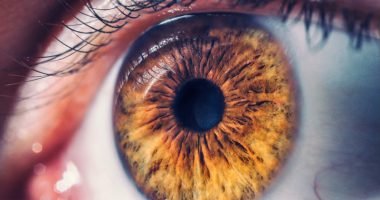Eye condition in SCD as common in children as adults: US study
More than 1 in 3 children found to develop damage to blood vessels in retina

More than 1 in 3 children and adolescents with sickle cell disease (SCD) develop retinopathy, or damage to the blood vessels in the retina, the light-sensitive layer of tissue at the back of the eye, according to a new U.S. study.
In addition, nearly one-tenth of eyes with retinopathy required treatment, the data showed.
These findings highlight that while SCD-related retinopathy is thought to be an age-dependent process and to be found more commonly in adults, pediatric patients seem to be at a similarly high risk of the eye condition.
“Our data underscores the need for patients — including pediatric patients — with sickle cell disease to get routine ophthalmic [eye] screenings along with appropriate [whole-body] and ophthalmic treatment,” Mary Ellen Hoehn, MD, a professor of ophthalmology at the University of Tennessee Health Science Center and the study’s lead author, said in a press release.
The data were shared in an oral presentation at the American Academy of Ophthalmology annual meeting, held Nov. 3-6 in San Francisco. The presentation’s title was “Evaluation of Pediatric Patients With SCR Enrolled in a Cohort Study at One of the Largest Sickle Cell Programs in the Country.”
9% of pediatric patients with eye condition required specific treatment
The researchers reportedly were surprised by the study’s findings. But they are hoping the results will lead to more eye screenings and improved care for children with SCD.
“We hope that people will use this information to better care for patients with sickle cell disease, and that more timely ophthalmic screen exams will be performed so that vision-threatening complications from this disease are prevented,” Hoehn said.
In sickle cell disease, red blood cells acquire an unusual shape that makes them become stiff and sticky. These sickle-shaped red blood cells do not last as long as normal-shaped ones, causing anemia — a shortage of red blood cells — and oftentimes blocking blood flow, which can lead to pain and other symptoms.
When red blood cells get trapped in the small blood vessels of the eye’s retina, they can cause retinopathy. As a result, patients may experience a sudden onset of floaters or blurred vision, flashes of light, or vision loss. The process behind this eye condition is thought to be age-dependent, and older patients are more likely to develop retinopathy.
However, Hoehn and colleagues at the Health Science Center found that pediatric SCD patients are also commonly affected by this eye condition.
The team drew on eye data from 652 children and adolescents, with a median age of 14, enrolled with the Sickle Cell Clinical Research and Intervention Program (NCT02098863), a patient registry launched at St. Jude Children’s Research Hospital, in Tennessee. All patients underwent surveillance eye exams from October 2010 to September 2022.
The results showed that about one in three patients (33%) had non-proliferative retinopathy, an early stage of the condition in which blood vessels are weakened, but where there are mild or no symptoms.
A smaller percentage (6%) had proliferative retinopathy, a more advanced stage characterized by the abnormal growth of new blood vessels in the retina.
In the largest study of sickle cell retinopathy in children, one in three had retinopathy, of which 9% required treatment. Regular eye exams in these patients can provide prompt identification and referral for further treatment.
About 9% of the patients with retinopathy required specific treatment. A total of 33 affected eyes were treated with panretinal photocoagulation, a laser procedure that thins out abnormally grown blood vessels. This procedure was mostly given for proliferative retinopathy at high risk for vision loss (43%).
Five eyes, all with proliferative retinopathy, received into-the-eye injections of anti-VEGF antibodies, which slow the growth of blood vessels.
Other eye complications, occurring in two patients each, included retinal detachment, where the retina pulls away from the back of the eye, and a blockage of blood to the retina — which led to vision loss in one patient.
The team also found that hydroxyurea — an approved therapy to reduce the frequency of pain episodes and the need for blood transfusions in SCD — and frequent blood transfusions were linked to lower rates of retinopathy. These beneficial effects were observed regardless of the patient’s disease-causing genetic mutation, according to the press release.
“In the largest study of sickle cell retinopathy in children, one in three had retinopathy, of which 9% required treatment,” the researchers wrote, adding that “regular eye exams in these patients can provide prompt identification and referral for further treatment.”







